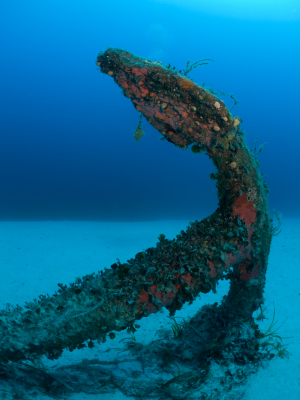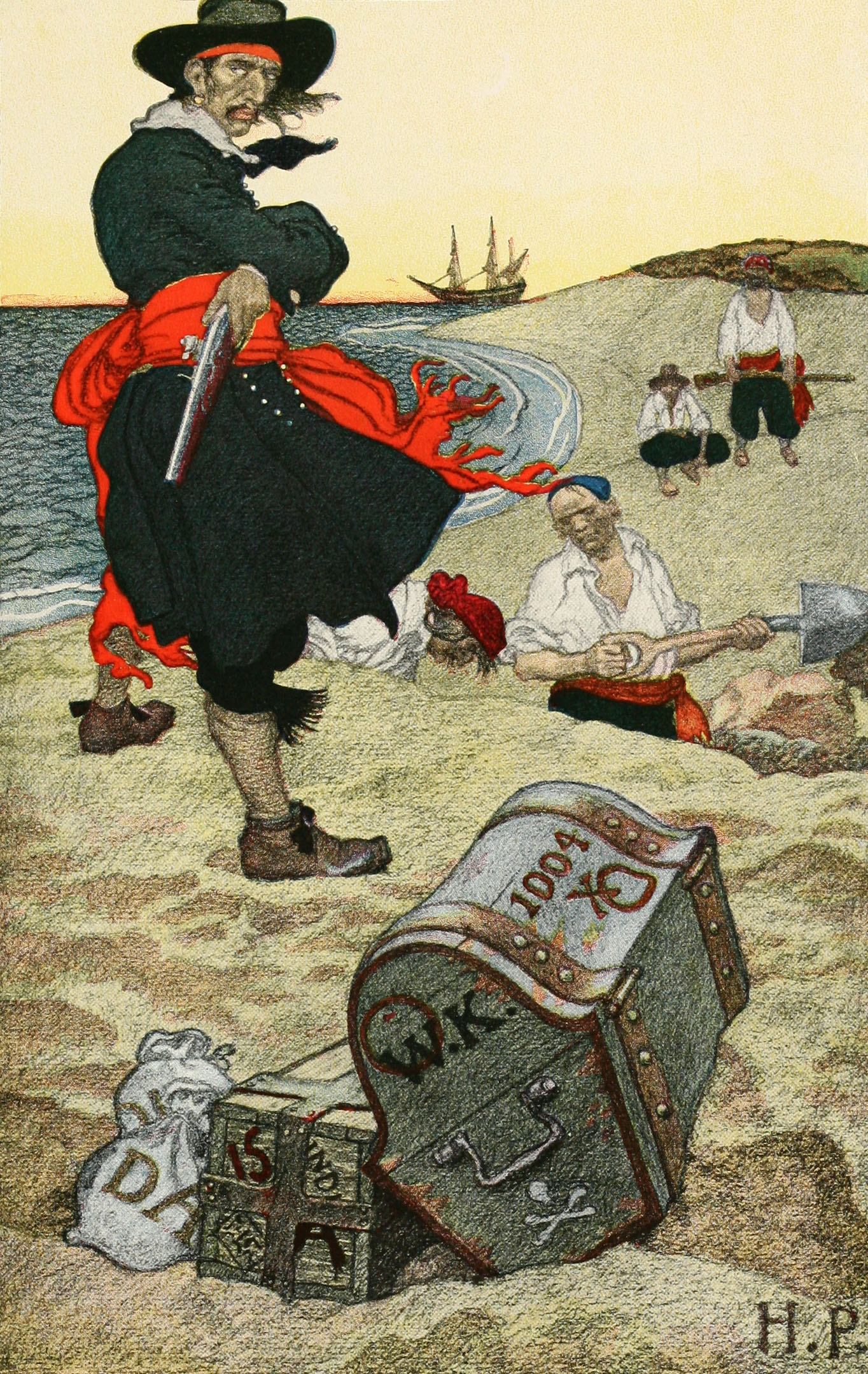 Ahoy all you pirate lovers out there! Have you ever wanted to visit a real pirate shipwreck? Well this could be your lucky day! Today, Indiana University, IU researcher and archeologist Charles Beeker and the government of the Dominican Republic are dedicating the wreck of the Quedagh Merchant as a “Living Museum of the Sea”. Now in case you missed all the hoopla three years ago when she was discovered, the Quedagh Merchant is the Armenian merchant ship that was captured in 1698 by the infamous 17th century pirate/privateer Captain William Kidd. It is, in fact, the ship that could be said to have been his undoing. As a privateer working for the British in 1698, Kidd was encouraged to attack ships belonging to certain companies and countries (like France, with whom England was at war). However, in capturing the French-registered Quedagh Merchant he made a mistake. Although she was a French-registered ship, she was carrying goods owned by multinational backers – including the British East Indies – and by stealing her, Kidd became a pirate.
Ahoy all you pirate lovers out there! Have you ever wanted to visit a real pirate shipwreck? Well this could be your lucky day! Today, Indiana University, IU researcher and archeologist Charles Beeker and the government of the Dominican Republic are dedicating the wreck of the Quedagh Merchant as a “Living Museum of the Sea”. Now in case you missed all the hoopla three years ago when she was discovered, the Quedagh Merchant is the Armenian merchant ship that was captured in 1698 by the infamous 17th century pirate/privateer Captain William Kidd. It is, in fact, the ship that could be said to have been his undoing. As a privateer working for the British in 1698, Kidd was encouraged to attack ships belonging to certain companies and countries (like France, with whom England was at war). However, in capturing the French-registered Quedagh Merchant he made a mistake. Although she was a French-registered ship, she was carrying goods owned by multinational backers – including the British East Indies – and by stealing her, Kidd became a pirate.
Captain Kidd learned of his change of status from privateer to pirate (and wanted man) when he returned to the Caribbean with the Quedagh Merchant, whom he had renamed the Adventure Prize. Kidd left the ship in the Caribbean in 1699 when he sailed to New York to try to clear his name of criminal charges. In keeping with the saying “No honor among thieves”, the story goes that the men Kidd entrusted with the Quedagh Merchant looted her and then set her ablaze and left her to drift down the Rio Dulce. She sank in ten feet of water about 70 feet off shore, and she lay there in anonymity for over three hundred years before being identified in 2007.
For the last three years, the University of Indiana’s Under Water Science team, led by Dr. Beeker, has been working to document and preserve the wreck. Amazingly the ship appears to have been untouched by looters over the years. At the time of discovery, Dr. Beeker remarked on this amazing fact,
“I’ve been on literally thousands of shipwrecks in my career,” Beeker said. “This is one of the first sites I’ve been on where I haven’t seen any looting. We’ve got a shipwreck in crystal clear, pristine water that’s amazingly untouched. We want to keep it that way…“(1).
Although the gold, silver, silk and other valuables were reportedly removed before the ship was burned and sunk, the team did find what might be part of the ship’s wooden keel as well as 26 cannons piled together. According to accounts of the Quedagh Merchant’s last hours, the cannons may have been piled together in the hold to force the burning ship underwater.
Today’s dedication celebrates the vision of this unique museum, which will allow people to experience some of history while still protecting the precious corals and other threatened biodiversity in the surrounding reef systems. The no-take, no-anchor, underwater museum will give divers a chance to see the remains of the 17th century ship including anchors and cannons resting on the sea floor. Interpretive plaques will help guide the divers around the site, as well as identifying rare corals and relics at the Quedagh Merchant and two other nearby wrecks.
Above ground, more traditional museums will benefit from the display of artifacts that are on loan from the Dominican Republic government. One of theses museums is the Children’s Museum of Indianapolis. A new permanent exhibit, National Geographic Treasures of the Earth!, will feature the only cannon to be removed from the Quedagh Merchant. Not every children’s museum can boast of a real pirate cannon as part of their exhibits!

Both these museums offer unique opportunities to experience a piece of the past either by diving on a sunken “pirate ship” or by learning about history and archeology using a 17th century pirate cannon. They also offer a wonderful vision for the future: by letting kids get up close and personal with real artifacts from archeological sites around the world and by respecting the coral and other sea life that now call the wreck of the Quedagh Merchant home.
Oh, and were you wondering why they picked today, May 23, for the dedication? You could say it is a tip of the hat to Captain William Kidd, the maybe pirate. Three hundred and ten years ago today Captain Kidd, still maintaining his innocence, was hanged for piracy and murder at Execution Dock, in Wapping, London. Was he a pirate or a –slightly– more respectable privateer? I’m afraid not even the Quedagh Merchant will be able to settle that debate.
Reference
- Indiana University (2007) Captain Kidd’s Shipwreck Of 1699 Discovered. ScienceDaily. Retrieved May 19, 2011, from http://www.sciencedaily.com /releases/2007/12/071213162036.htm
Kelly Grooms
Latest posts by Kelly Grooms (see all)
- Live-Cell Imaging: It’s Time to See What Else Your Luminescence Assays Can Tell You - December 5, 2024
- Don’t Flush Your Kitty Litter! Toxoplasmosis Is a Growing Threat to Sea Otters and Other Marine Mammals - November 12, 2024
- Tardigrade Proteins Might Solve the Cold Chain Problem for Biologics - October 17, 2024
